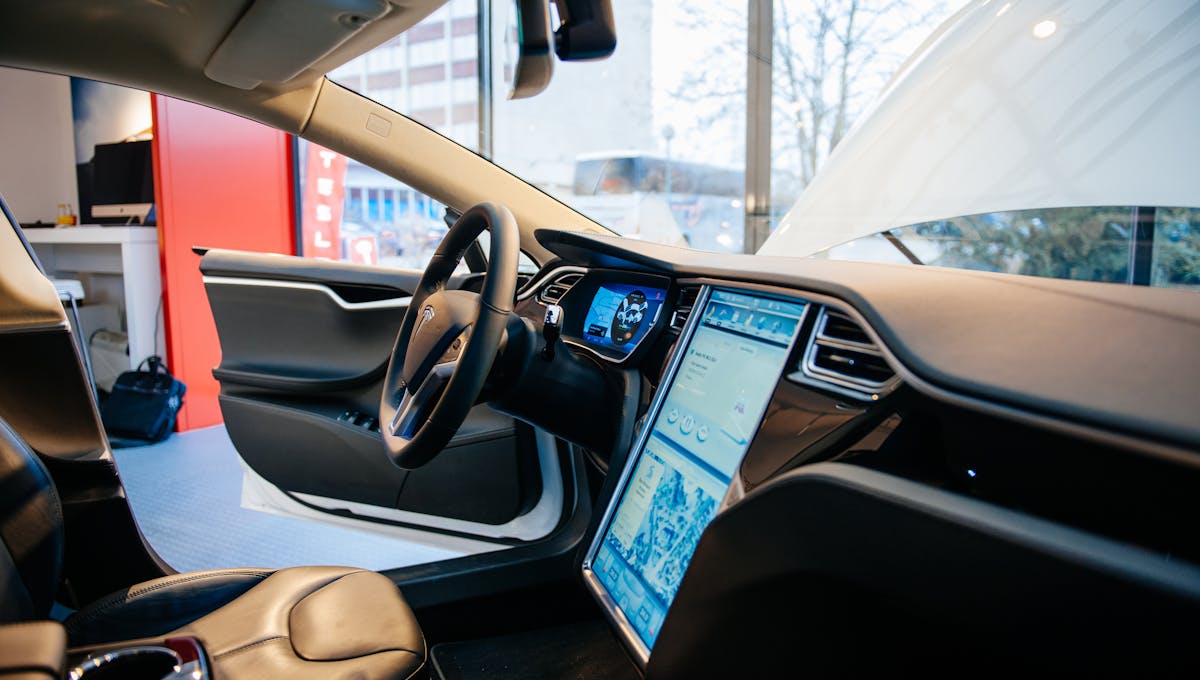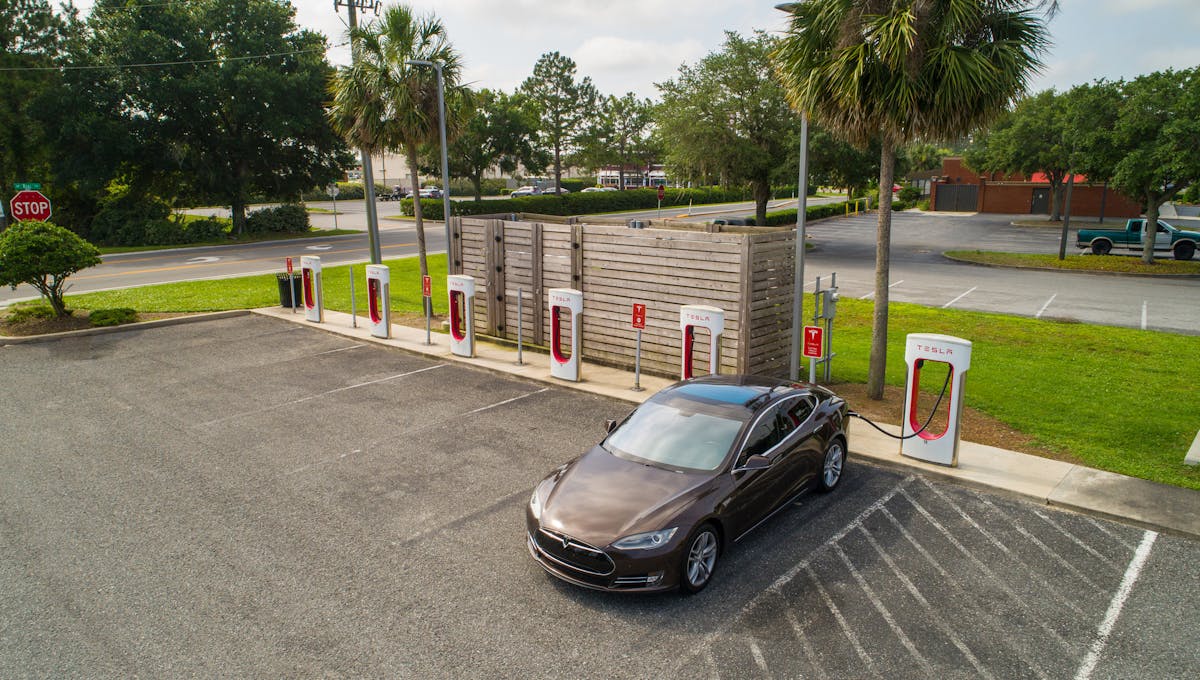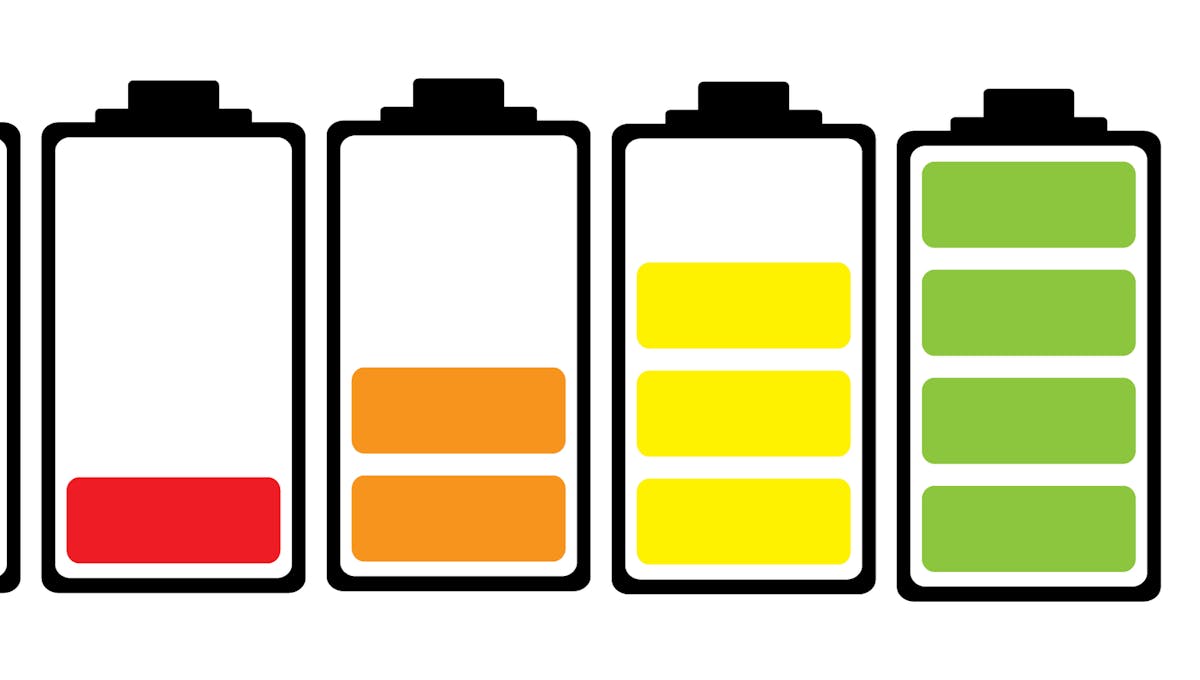How Far Can An Electric Car Go?
The age of the electric car is nearly upon us. As the 2030 ban on the sale of petrol and diesel cars draws nearer, many anxious drivers are looking for an answer to the now proverbial question: how far can an electric car go?
The truth is, much like that other age-old question, ‘how long is a piece of string’, there is no one right answer.
There are multiple variables which come into play, and the speed with which electric car battery technology is developing means that even if we could give you a definitive answer today, it might not be right a few months from now.
In this article, we explain the concept of electric range, explore the different factors which determine how far an electric car can go, and how you can attempt to extend your electric range to squeeze the most miles out of your battery.
What is electric range?
Electric range, EV range, or just ‘range’, is the estimated distance that your electric or hybrid car can travel on a single charge.
In an electric vehicle, you’ll often find the remaining or estimated ‘range’ displayed in the driver's binnacle or other digital displays as a percentage or number of miles/kilometres remaining.
Although manufacturers will quote a given range for any vehicle, the actual range can vary considerably depending on a number of factors such as your driving and charging habits and the ambient air temperature.

How is electric range calculated?
Electric vehicle range is not actually calculated in real-world driving conditions. Instead, like any good scientific experiment, it is conducted under clear and repeatable laboratory conditions. So, how reliable is the figure that manufacturers provide on their website?
Once upon a time, both MPG in petrol and diesel cars and electric range were calculated using the NEDC (New European Driving Cycle). This was relatively inaccurate, and has since been replaced by the more accurate WLTP (World harmonised Light-duty vehicles Test Procedure).
Electric vehicle range as stated by manufacturers may be more accurate now than it was 10 years ago, but you should treat any car that provides a single range figure with a healthy dose of scepticism.
Are EV range figures reliable?
Some manufacturers offer multiple vehicle range estimates to account for a number of variables. For instance, Renault suggests that in near optimal conditions, driving at an average speed of 31mph with an ambient temperature of 20 degrees and ‘eco mode’ enabled, the Renault Zoe will manage a healthy 234 miles.
When the ambient temperature drops to -5 degrees (and you inevitably turn the heating on) you can expect just 165 miles.
Spend a lot of time on the motorway? With an average speed of 68mph and an ambient temperature of 20 degrees you’ll manage just 145 miles. This has a lot to do with the fact that most EVs are single-speed, so are currently less efficient at driving on the motorway (you can learn more about this in our post ‘do electric cars have gears?’)
On Nissan’s website, it says that the Nissan Leaf offers us only a single range figure with no description of the conditions under which it is actually achievable.
If you would like to see how the Nissan Leaf compares to the Renault Zoe, EV database offers a more in-depth insight into ‘real range’ figures for most electric vehicles, including city, highway and combined driving in both ‘cold’ and ‘mild’ weather.
In other words - yes, WLTP figures are more accurate and should produce a broadly comparable measure of range between cars. However, as Renault’s website clearly demonstrates, electric range is perhaps less predictable (and more variable) than petrol or diesel mpg figures, so be wary of manufacturers trying to sugar-coat it.
What is the average electric range?
The average range of an electric vehicle is, according to Newmotion, about 181 miles.
It might not sound like much, but we’ve certainly come a long way. Way back in 2012, the average electric vehicle range was between 70-100 miles on a single charge.
Of course, if you want to go further on a single charge you can - but it will cost you. The latest Tesla Model S Long Range has an estimated range of 405 miles. And with a retail price of £91,980, it will stretch your finances just as far!
However, more modestly priced EVs such as the MG5 EV (which costs just £25,095 after Government grants for electric cars are applied) pack a more than passable 250 miles of range.
You can see our list of electric cars with the longest range - these mass market cars have ranges of 330+ miles!

What affects EV range?
Electric vehicle range can be affected by a number of factors, both within and outside your control.
Battery capacity
Sorry to break it to you, but size matters. Generally speaking, the bigger the battery - measured in kilowatt hours (kWh) - the longer the range.
For example, the Hyundai Ioniq 5 with its 62kWh battery has a much longer range (298 miles) than a Smart EQ ForTwo, which has a 17.6kWh battery and a 60 mile range.
You can read more about different electric car battery types and how it affects range.
Driving style
EVs tend to have a single-speed transmission. This is because the power band (the rpm at which the engine is operating most efficiently) is a lot wider than on an internal combustion engine car.
While this means that EVs have fairly rapid acceleration and can easily get up to motorway speed on a single gear, it also means that they are generally less efficient at high speeds. Because of this, we see a big drop-off in range when travelling at high speeds for long periods.
Regenerative braking
When we brake, kinetic energy is translated into heat energy as we apply friction to the wheels using brake pads. This heat energy is lost to the environment, which makes braking incredibly wasteful.
Regenerative braking is a key feature in almost all new EVs. As you lift your foot off the accelerator, the motor will disengage. The motor will then begin to function as a generator, producing electricity while simultaneously slowing the car down. The strength of regenerative braking can usually be adjusted by the driver. ‘One-pedal driving’ is possible around town.
Charging habits
It might be reassuring to know that your Kia EV6 can do 326 miles on a single charge, but you shouldn’t put this to the test too often.
EVs use Lithium-ion batteries, which function at their best when kept between 20-80% of their usual battery capacity. Fully charging and discharging your battery can damage it over time and increase the rate at which your battery degrades.
Ambient temperature
The winter can leave many of us feeling lethargic - the same is true for EVs.
The Lithium-ion batteries inside EVs use chemical reactions to produce electricity. When the temperature is low, the rate at which these reactions occur is also much slower. This has a knock-on effect on the battery’s performance, and may also reduce the amount of regenerative braking.
How can I maximise my EV range?
You might not be able to physically increase your EVs battery capacity, but there are plenty of things you can do to maximise your EV’s range.
Turn on Eco Mode
Eco mode will help you eke out those miles. This will reduce the speed at which you accelerate, and also reduce the amount of power going to other systems, such as air conditioning.
You may also want to turn off the heating (unless you really can’t go without it) as unlike petrol or diesel cars, EVs don’t use heat from the engine to warm the cabin. Instead, electricity from the battery is used to power a heat pump, which converts cold outside air into warm cabin air.
Turn on/maximise regenerative braking
Most manufacturers allow you to select the level of regenerative braking that you want to be applied every time you lift your foot off the pedal. This is to allow new EV owners to get used to the sensation of braking without using the brake pedal.
If you do a lot of driving around town, you’ll want to select the maximum available ‘regen’ to extend your range the most.
Aero wheels
EV manufacturers have tried to differentiate their cars with some divisive retro-futuristic designs (we’re looking at you, Honda E). However, it’s not just the body that’s different.
Many manufacturers have also recognised that there are some substantial range-gains to be had from using certain aerodynamic wheels, and even different tyres. The Tesla Model 3 managed an extra 10 miles with Tesla’s Aero wheels equipped.
Keep the battery between 20-80% full
If you want to keep your maximum range for longer, be sure to look after your battery. The best way to do this is to aim to keep your battery between 20-80% state-of-charge (SOC).
Most EVs actually have a built-in buffer, so you will never be able to truly charge to 100%. This is to protect the battery. EVs will also charge more slowly after 80% for this reason, even when using rapid or ultra-rapid EV charger types.
However, some EVs also allow you to pre-set a charging limit, so you don’t ever charge beyond a certain point. This will also make your EV more efficient, particularly if you tend to drive a lot in towns and cities, as when the EVs battery is full it won’t be able to take advantage of regenerative braking.
You can make your life easier by juicing up your car overnight in your driveway. Check out RightCharge to compare prices for home electric car chargers. This is an affiliate link so we make money if you purchase a product via RightCharge, but you won't pay extra for using the link!

How does EV range change over time?
Years ago, we used to take battery life for granted. Our old Nokia brick-phones would last for weeks on end. Now, we’re lucky to squeeze a day’s use from a single charge. As our phones get older, ‘a day’s use’ becomes half a day, and we have to use every battery saving trick in the book just to get from 9-5.
Could the same thing happen to your car? Could your daily commute suddenly start to feel like a frigid expedition into the Arctic circle as you desperately try to conserve battery power just to make it there and back?
Although battery degradation is noticeable on EVs, it happens gradually. In fact, the average capacity loss is just 2.3% a year. This is thanks to greatly improved thermal management technology.
Conclusion
Electric car range remains one of the biggest issues for people considering making the transition to EVs. But new battery technology, bigger batteries and a rapidly expanding charging network mean ‘range anxiety’ should be a thing of the past for the majority of EV users.
‘Should I buy an electric car?’ - it’s the question on many people’s minds right now. To help you make up your mind, we’ve compiled some great lists of the best electric cars, cheapest electric cars, and best small electric cars on the market right now.


